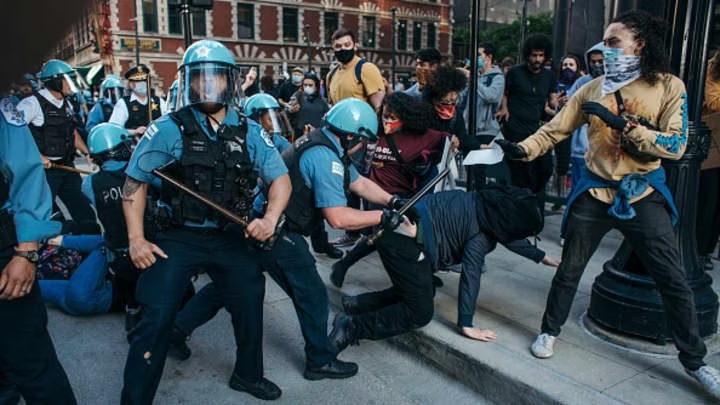The Culture Study: Police Brutality in a Risk Free Environment
March 30, 2023
There is fundamental issue with policing in America. In any given dispute officers are sent to address, their primary method is to use unjustified violence and force. While black Americans suffer from this notion a majority of the time, American policing is brutal for reasons that include, but go far beyond racial bias.
Police brutality in America isn’t a case of bad apples picked from a ripe bunch. It is undeniable. A KFF poll from 2020 found that 71% of black Americans say they’ve experienced some form of racial discrimination or mistreatment during their lifetimes. That is including 48% who said at one point that they felt their life was in danger because of their race.
On March 13, 2020, Breonna Taylor—a black woman—was shot and killed after at least seven police officers of the Louisville Metro Police Department executed a no knock warrant. The US Department of Justice later launched a comprehensive investigation into the LMPD and released its findings on March 8, 2023.

The report found that the LMPD has continuously used practices that violate the Constitution and are unlawful. “The Justice Department has concluded that there is reasonable cause to believe that Louisville Metro and LMPD engage in a pattern or practice of conduct that violates the constitutional rights of the residents of Louisville — including by using excessive force, unlawfully discriminating against Black people, conducting searches based on invalid warrants, and violating the rights of those engaged in protected speech critical of policing,” said Attorney General Merrick B. Garland.
The report is 90 pages but the main findings are as stated.
“Specifically, the Justice Department finds that LMPD: Uses excessive force, including unjustified neck restraints and the unreasonable use of police dogs and tasers; Conducts searches based on invalid warrants; Unlawfully executes search warrants without knocking and announcing; Unlawfully stops, searches, detains, and arrests people during street enforcement activities, including traffic and pedestrian stops; Unlawfully discriminates against Black people in its enforcement activities; Violates the rights of people engaged in protected free speech critical of policing; and along with Louisville Metro, discriminates against people with behavioral health disabilities when responding to them in crisis.”
This year, the bodycam footage of the officers charged with murdering Tyre Nichols was also released. The disturbing videos show the officers shouting expletives at Nichols and for him to stop resisting, as they kick, punch, and club him with a baton, without Nichols fighting back.
It’s established by evidence, reports, and history that there is structural issue in policing. But why? What is the root of this stride? Perhaps this is an inkling. Police brutality is historically covered up, and when it does get attention, there is rarely any consequences.
According to the Police Brutality Center, Professor Stinson’s data on police crimes — less than 2% of officers who killed civilians in the line of duty, were charged with a crime. 98.2% officers who killed people while on duty were not charged with a crime. Of the 155 officers prosecuted for murder or manslaughter since 2005, only about one-third resulted in a criminal conviction. One-third were acquitted in court, and another one-third of cases are still pending.
Police officers today seem to thrive off of control and obedience. They assert dominance by barking out orders to you, and if you don’t immediately comply, they get angry and aggressive. Violence is their answer, even when it isn’t necessary.
So how do we fix this? Have you heard the term defund the police? It’s one solution. It does not mean to abolish policing. It means “reallocating or redirecting funding away from the police department to other government agencies funded by the local municipality.” Simply to start anew, so we are no longer using a system with institutionalized issues.
Police departments can also implement different hiring practices and implicit bias training. There hasn’t been studies on how effective this training will be, but there is no harm in trying. Unconscious prejudice does exist and one should be made aware of it so it doesn’t effect how they interact with the civilians they’re meant to protect later on.
Finally, to improve disciplinary and supervision measures. The title of this article is Police Brutality in a Risk Free Environment, because that is exactly how it is now. Risk free. There have only been consequences for officers who engage in police brutality a handful of times.
“Suppose a police officer engages in excessive or deadly force, and there is no punishment,” from Very Well Mind. “In that case, this sends the message to the rest of the department that the behavior is acceptable.” It needs to be clear that this behavior will not be tolerated, or else it will keep happening again and again. Charge and convict the officers that are perpetrators of police brutality.
It is unfortunate that solving police brutality will not be an easy fix, but it is worth every bit of the grueling fight.
